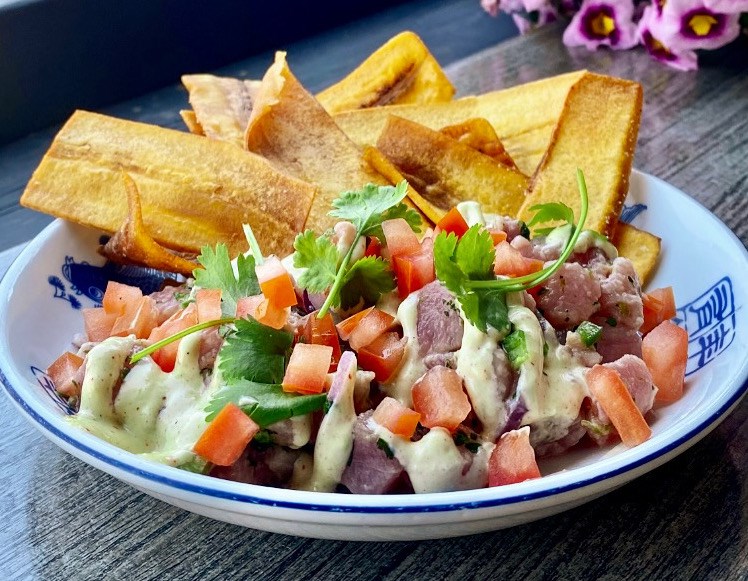Tracing the roots of any ancient food can result in hotly contested origin stories. The culinary history and concept of ceviche is no exception.
But what exactly is it?
Ceviche is pronounced seh-VEE-cheh or seh-BEE-tcheh, and is made up of fresh, mostly cubed raw fish marinated or "cooked" in a sizeable quantity of citrus juice. Cooking with citric acid happens through a chemical process called denaturation with the acid working on the proteins in the fish. As the proteins coagulate, the fish becomes firmer and more opaque thus changing the flesh of the fish from raw into something that appears to have been cooked with heat.
Who doesn’t love food science?
One theory of its history suggests that a form of ceviche originated thousands of years ago from the Moche civilization of coastal Peru. The Moche peoples marinated seafood using fermented juice made from tumbo, their local relative to passion fruit, well before lime became the perfect substitute. Another is that during the time of the Incas, fish were marinated using chicha, a corn-based fermented beverage of Andean origin.
Onions and bitter orange landed with Columbus in 1492, followed promptly by lemons and limes, brought from Asia by Spanish and Portuguese traders. From that point on in time, the fish was predominantly marinated using lime with the addition of peppers, onions, as well as other seasonings to make leche de tigre, or tiger’s milk. (Interestingly, this fiery liquid became not only the standard base for ceviche but a drink unto itself, widely believed to be an aphrodisiac and even a hangover cure.) This is also about the time that ceviche became firmly established as an iconic Peruvian dish, with local flavourings and ingredients added to customize it regionally.
But let’s wind the clock back even further.
An older history bite suggests that at least 3,000 years ago, fishermen ate what they caught straight from the sea and quickly prepared it with ancient indigenous seasonings. Predating even the Moche, their catch of small fish was largely flavoured with a quantity of local chili peppers and seaweed. Indeed the name ceviche may have come from siwichi, meaning fresh fish in Quecha, just one of Peru’s pre-Columbian languages. Historically, even Filipino kinilaw is a remarkably similar dish. At least 1,000 years old, it uses vinegar rather than citrus.
And its ties to Europe? The word ceviche is possibly linked to escabeche, the Spanish pickle.
Dishes that owe their origins to ceviche are now made all along the Pacific coast and beyond. In modern day Peru you can find it served with everything from corn to sweet potato, often with the addition of rice. Ecuadorian ceviche tends to feature tomato and sometimes peanuts, while Mexicans pop it on top of a taco, with a side of avocado. Coastal Hondurans make it with the welcomed creaminess of coconut milk.
A true world traveler, ceviche can even be found in Guelph.
Baker Street Station (bakerstreetstation.ca) has their own style of the dish. Their version is made with tuna, citrus, cilantro, red onion, jalapeño, avocado aioli and is served with plantain chips. A fresh and beautiful appetizer, you can almost taste the echoes of a Peruvian past. You’ll find it on their menu at 76 Baker Street in downtown Guelph.




